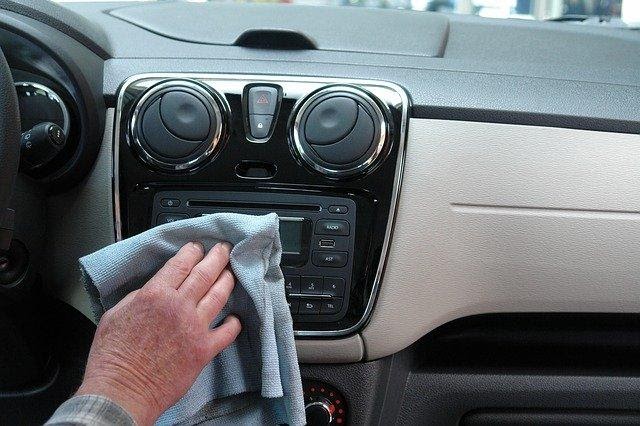If you’re on the road for your job, there are a lot of advantages to having a company car. You won’t have to rack up all of those miles on your personal vehicle, and you still get to experience the fun of traveling for work! But when it comes to keeping up with company vehicles, how do employees stay on top?
Managing your company’s car is no easy task. It requires regular maintenance and detailing, following the rules of the road, as well as the company regulations, to the letter. Not to mention being in constant communication with your employer. It may seem daunting at first, but following these simple tips makes taking care of the company vehicle easy!
Some aspects of managing a small fleet can indeed be performed on a simple spreadsheet, but at a certain point, you’re better off using a solution designed expressly for large fleet management.
Following the Rules
All in all, the best way to take care of your company vehicle is to follow the rules. Your company may have detailed regulations as far as maintaining your vehicle. As well as how often you need to do certain things.
Here are some general rules that most companies will maintain when releasing a vehicle to an employee:
- Keep Up Appearances. One of the most fundamental regulations a company could put into place is making sure the car looks good at all times. This includes detailing the interior of the car, as well as washing the exterior regularly.
- Regular Maintenance. All in all, having regular maintenance on the car may seem like common sense. However, a lot of companies have to regulate how often a car needs to go in for regular maintenance. Oil changes, tire rotations, as well as general upkeep of the engine needs to be up to company standards!
- Driving Record. Keeping a clean driving record while driving a company car is extremely important. All in all, road rage won’t work in the office, and it won’t work in the company owned vehicle. However, this also includes following the rules of the road and keeping the insurance premium down for your company.
- Fuel in the Tank. Some companies offer not only the company car, but the use of a fuel card for the vehicle as well. Stay on top of your options for a fuel car by using sites like iCompario, or other options. This way you know how to successfully follow the rules for the fuel card and the company at the same time!
- Other Regulations. The rules are different from company to company. Because each benefit is different, be certain to ask questions regarding company policy for the employer owned car.
Knowing all the rules, as well as being able to follow them, is extremely important when it comes to managing your company’s car! Don’t be afraid to ask employers for specifics, or any questions you may have as far as vehicle regulations.
Communication
One key aspect to making sure you keep your company car benefits is to have constant communication with your employer about the vehicle assigned to you. You will need to know the ins and outs of your benefits package, as well as the expectations the company has of you. This will also mean staying in constant communication about the maintenance, wear, as well as needs for your company car.
For instance, you won’t be able to just take your car to any old repair shop if something comes up. Your company may have specific needs as far as insurance and discounts are concerned. Talk to your company about choosing the best workshop for your car repairs. This way you know what they want from the beginning, and there are no surprises if the car needs to go in to the shop.
Maintain a certain level of documentation and accountability for the vehicle while it is in your care as well. Whether you’re emailing your supervisor about mileage, or have questions about what kind of tires the car needs for the winter, it’s important to keep an open line of communication with your employer at all times!
Maintenance and Care
Managing a car, personal or company owned, means knowing when it needs maintenance. Not to mention keeping up with the overall care of the car! All in all, it’s important to remember that this is not a personal vehicle. It is a company owned car that you have the privilege to use.
That being said, you need to be aware of what is needed as far as upkeep and cleaning. You should also know whether the company is leasing the vehicle, or owns it outright. As there are different rules for leasing maintenance and repairs.
Schedule regular maintenance on the vehicle that includes the following:
- Interior cleaning
- Detailing
- Oil changes
- Tire rotations
- Air filter changes
- Headlight, turn signal, brake, parking brake light checks
- Tire changes
- Oil and coolant levels
- Transmission fluid checks
Your company may also require more detailed maintenance, so be aware of their requirements. That way you can safely manage your company car for the long-run!
Technology
The world is constantly changing. Technology and support for you as an employee should extend to your use of the company car. Whether your company gets a tax break for using electric vehicles, or you keep your insurance rates low with a dashcam, there are ways to use technology to manage your company car.
For example, if you use a mileage counter in employer’s vehicle, you can keep detailed records of the miles put on your company vehicle. Dashcams provide you and your employer with a level of security if there is ever an accident involving the company car. Technology may help to keep you safe, accountable, as well as manage your company car better!
Managing Your Company’s Car to Stay Safe and Keep Your Benefits!
It’s not easy taking care of a car. Because your company has trusted you with the care of one of their vehicles, it’s important to know how to manage your company’s car successfully! Use these tips to make working on the road safe for you and to keep your company car benefits for the long haul!




